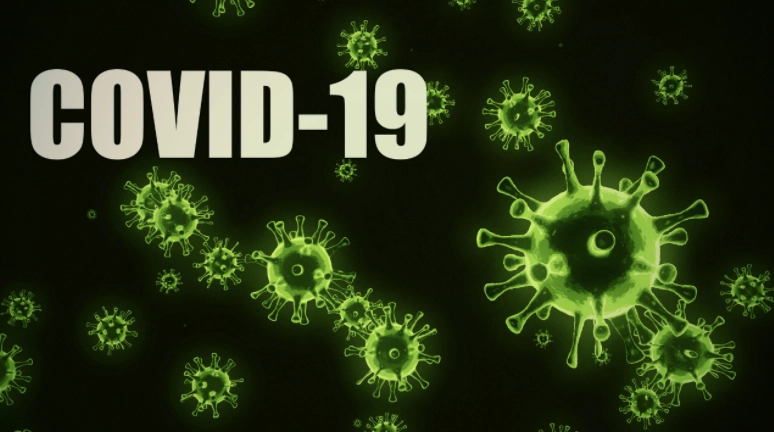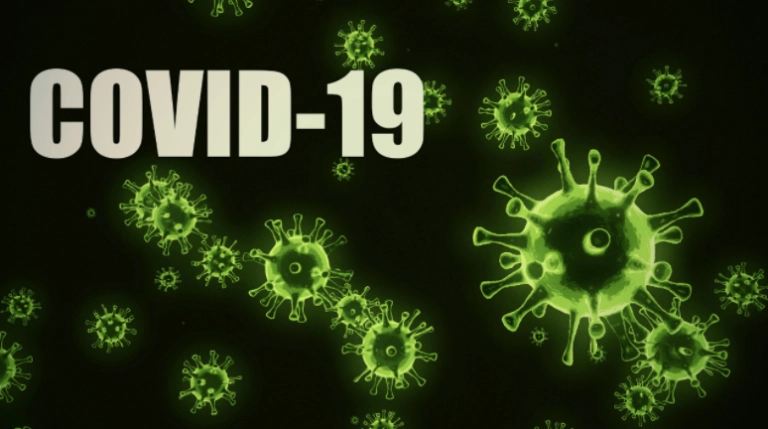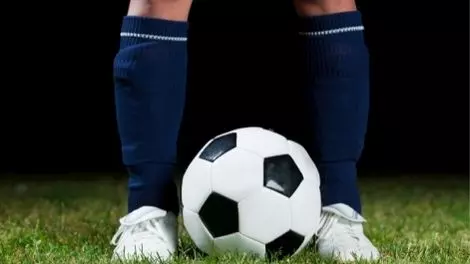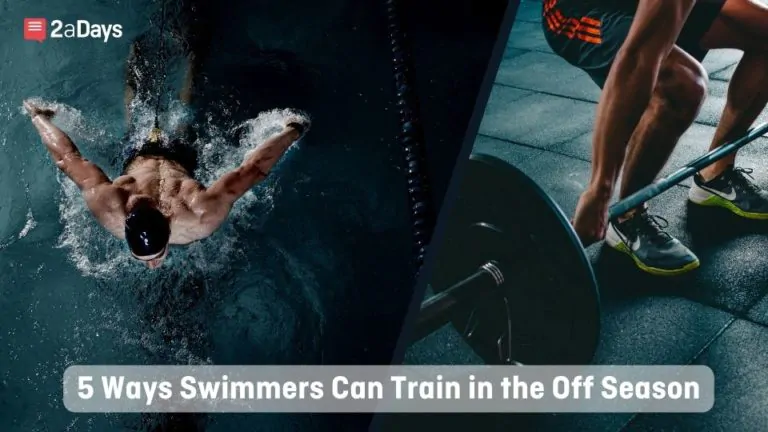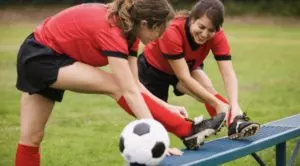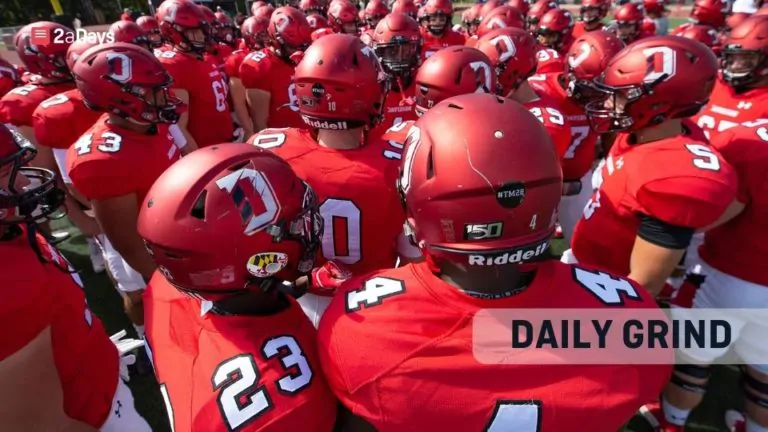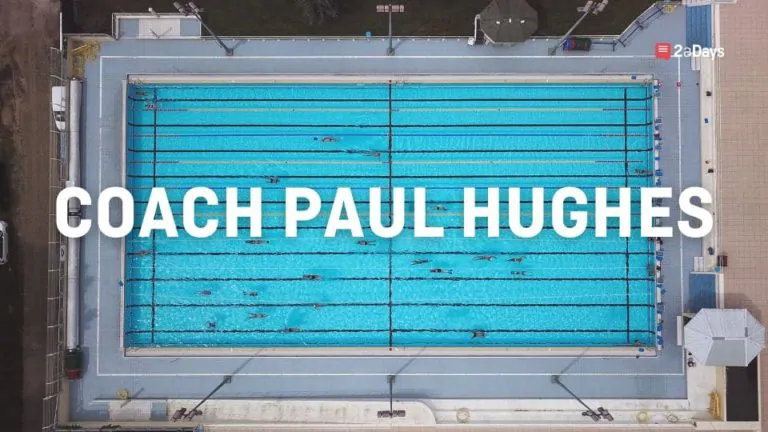Imagine this. You are nearing the end of junior year with the optimistic mindset that in the coming fall, you'll soon be officially committed to attend your dream school with a scholarship to play the sport you love. Then, as talk of the “novel coronavirus” gains traction over weeks then months, these goals merely seem to have reverted back to far-fetched aspirations. Well, this has been the sad reality for high school athletes unable to compete due to state restrictions.
This situation has been all too familiar for student-athletes residing in states such as California, Nevada, and Washington, whose guidelines have been much more conservative. Most, if not all, fall sports were postponed to the spring, which effectively sidelined all prospective recruits for these past 11 months. Through no fault of their own, they have been victims of unprecedented and unlucky circumstances. While such measures are necessary for maintaining public health and safety in the recruitment scope, it has caused vast disparities across the nation regarding the pool of athletes that college coaches are willing or able to pursue actively.
It has raised many eyebrows and questions regarding how coaches have been navigating these state-by-state variations. There exists uncertainty as to whether coaches are still recruiting from states whose seasons have been canceled. Those who have been competing now have an advantage over those who have been unable to play. Yet, perhaps the most important question to ask is if there is anything recruits themselves can do to alleviate the inequitable situation they now find themselves in.
In an attempt to gain more clarity on behalf of athletes, 2aDays turned to the very people who carry out the recruiting process—the coaches. Among those contacted were baseball, soccer, and basketball coaches from schools across the country. If one fact is for sure, it is that all these coaches are, and have been, actively recruiting from states whose seasons and competitions have been canceled. Even schools near outbreak ‘hotspots' such as California Baptist University are actively recruiting within the state, a fact confirmed by the school's basketball head coach Jarrod Olson. However, there is an agreement that the disparities caused by the pandemic have only furthered the complexities of the traditional recruitment process.
These complications are broad and far-reaching, affecting factors from roster inflation and official campus visits to team culture and individual athlete performance. At the Division 1 level, in particular, the NCAA extended a year of eligibility to allow an additional season of competition for student-athletes. This will be of great benefit for players wishing to re-do their senior year season in the short-term. But when considering this provision's repercussions, rising senior and junior high school classes may likely suffer the most, given that open roster spots will be more limited. As baseball coach Marty Sutherland points out, “This has created inflated rosters at all levels. Unfortunately, I don't believe it will be [just] a one-year problem because of the trickle-down effect of all kids getting additional years.”
In the context of physical meetings and watching prospective recruits, this process has been all but an in-person interaction. The official campus visit was once a monumental experience of the recruitment process, complete with one-on-one time with the coaching staff, facility tours, introductions to current players. However, coaches rely on Zoom calls and film because, as Skidmore College head soccer coach Lacey Largeteau noted, “access is the main disparity.” Additionally, the inability to foster human connection through a screen further exacerbates the difficulties of ensuring each recruit is a good fit within the team personality and culture. For many coaches, including Sinead McSharry, who coaches soccer at St. Lawrence University, this is at the forefront of her mind in recruiting, but she is “hoping the disparities are not in the character piece but in the strength and conditioning piece which is something I can fix.”
Another disparity surfaces when comparing individual athletic performance, fitness, and skills. Given that it is a bit more of a controllable factor, many coaches do not see this as a distinct advantage or disadvantage. Coaches like Ron Rainey, Dartmouth College's head soccer coach, take the stance that “athletes who have figured out a way to keep getting better during Covid have an advantage whether they have or have not been competing.” Simply put, athletes can control their own personal development with the autonomy to decide when and how they workout. Regardless of if there is access to a gym or training facilities, there are still numerous alternatives to maintain physical fitness and athletic expertise.
After considering all these disparities and unforeseen wrinkles to the recruitment process, the final question left to be answered is, what should prospective athletes do to give them the best fighting chance for successful recruitment in the wake of this coronavirus era? Well, as with any adversity an athlete faces, whether it be recovering from an injury, transferring teams, or even a once-in-a-century pandemic, the mindset to deal with it is what matters above all else. Specifically, a growth mindset is imperative; coaches all agree that this situation should be looked at as an opportunity to reinforce one's own athletic identity, talents, and ability to cut through the clutter among other recruits.
Athletes must first embrace the uncertainty of today, tomorrow, and the coming months in the season. As University of Minnesota baseball coach Brandon Hunt puts it, “nobody knows when the restrictions will be loosened in certain areas of the country, so when things do start to open back up, you want to be as ‘game ready' as possible.” This could include consistently completing bodyweight workouts, conditioning, and making the most of all other available resources.
In terms of engaging with coaches, a majority of the responsibility to take the initiative and be proactive considerably falls on the recruit's shoulders now more than ever. According to Jessica Turner, a women's basketball coach at Skidmore College, “the prospective student-athletes that have exceptional communication skills, remain proactive, take the time to go on virtual tours, and visit campuses in-person when allowed to do so, are the ones being recruited.” Sending video compilations that showcase skills, live streams, or videotaped practices can help coaches evaluate individual athlete performance when it is not possible to do so in real-time.
Much like in every other facet of life, the COVID-19 era has wholly turned the recruitment process on its head. Even as guideline variations continue to unevenly affect the population of future and current recruits, being determined yet adaptive is key. There are many uncontrollable factors such as season duration, accessibility, and travel restrictions, but what will always be controllable is the perspective and attitude one carries to endure the challenge.
Full Coach Interviews on COVID-19 Recruiting
2aDays: Are you actively recruiting players from states whose seasons and competitions have been canceled?
Brandon Hunt (University of Minnesota / Baseball)
Yes – We recently signed a player from the state of Washington who had his Junior (and potentially Senior) year canceled. Fortunately, we were able to see him play prior to his junior summer getting cut short.
Minnesota baseball head coach full interview
Marty Sutherland (University of Iowa / Baseball)
Yes. This really hasn't had much of an effect on recruiting due to the ability of most travel organizations are playing normally.
Iowa baseball head coach full interview
Ron Rainey (Dartmouth College / Soccer)
We are trying to recruit from all areas.
Sinead McSharry (St. Lawrence University / Soccer)
Yes absolutely.
Josh Pastner (Georgia Institute of Technology / Basketball)
Yes.
Dagan Nelson (New York University / Basketball)
Yes, we are.
Lacey Largeteau (Skidmore College / Soccer)
Yes, we are. We are relying heavily on club coach and HS coach recommendations and any film they have (the more up-to-date, the better).
Lacey Largeteau full interview
Jessica Turner (Skidmore College / Women's Basketball)
Yes.
Jarrod Olson (California Baptist University / Women's Basketball)
Yes, we are located in California, and none of the high school basketball teams have played games so far. Hopefully, they will be able to start playing soon.
2aDays: What would you recommend recruits do if their competition has been canceled for a long period of time?
Brandon Hunt (University of Minnesota / Baseball)
Find a local facility to work with to keep yourself (and your game) in shape. Nobody knows when the restrictions will be loosened in certain areas of the country, so when things do start to open back up, you want to be as “game ready” as possible when college coaches are able to get back onto the road recruiting again. If all local facilities have been shut down, try to continue to keep your body in shape as best as you can, whether it be bodyweight workouts, conditioning on your own, or throwing hitting into a net or mattress in your garage.
Marty Sutherland (University of Iowa / Baseball)
Play other sports! Train at local gyms and indoor facilities. In our sport (Baseball), most kids have opportunities to continue to train at facilities in their town/city.
Ron Rainey (Dartmouth College / Soccer)
Right now, we are asking for patience as we come out of the pandemic (which we are not out of yet). We think recruiting for this next cycle may be where athletes will be making their decisions in their senior year. That is a little different than the past 7-10 years, but over ten years ago, most of the decisions were made during the senior year.
Sinead McSharry (St. Lawrence University / Soccer)
I think it depends what they have access to; I know I was chatting to a few folks out in
California and the west coast when forest fires were happening, and they did the best with what they could, such as, you know, setting up little drills or footwork challenges with cones, you know minimal resources, but making the most of what they had. So, we kind of guided them through things we have our team do like wall ball, mini skills in and around their home that they felt safe they could do. I think highlighting or filming that all you need is a phone and edit it yourself and compile a bunch of different skills like passing and receiving. If you've got any siblings, you can always have them toss a couple of balls and receive the ball out of the air, which is one of the more difficult things to work on when you don't have a partner or a team. And then just being as active as they can, controlling what they can control. So, if they can't spend time being in games, perhaps they can spend a bit more time researching or attending virtual tours and starting that process a bit earlier as opposed to saving it to the end. So, when they get out, they can spend a bit more time on their game. So probably ball skills overall in terms of physical and skill part and then the research part probably trying to contact coaches and watch virtual tours.
Josh Pastner (Georgia Institute of Technology / Basketball)
This is unchartered territory for every prospective student-athlete and not easy for any of them. They just need to do their best to reach out to as many coaches as they can to let them know about them and their game.
Dagan Nelson (New York University / Basketball)
Use this incredible opportunity to get better in all ways. Turn every negative into a positive!
Lacey Largeteau (Skidmore College / Soccer)
Stay in touch, visit campus if you can, make videos of your own showcasing skills, fitness, and any small-sided competition you can compete in. You can videotape a practice if possible. Lots of clubs are putting together friendlies within their own teams, and that has been useful footage.
Jessica Turner (Skidmore College / Women's Basketball)
Prospective SA's should be researching colleges/universities that interest them (size, location, major, etc.), reach out to the coaching staff (Head Coaches and Assistants) for each school that they are interested in to introduce themselves, and then setting up times to either speak over the phone or via Zoom to ask questions. Any film that they have is VERY important – coaches, for the most part, understand that film is limited and recruits do not have control over their last date of play, but a most recent game and highlight film is absolutely needed when reaching out to coaches.
Jarrod Olson (California Baptist University / Women's Basketball)
I would recommend patience to recruits. You can't control the pandemic or recruiting.
You can, however, send videos to coaches. Send them your best stuff and see where it goes. Also, I would encourage recruits to keep an open mind about what schools they would be interested in. Lastly, if you feel good about a school that has offered you a scholarship, don't hesitate; just take it. Don't wait for something that you think might be better that might not come along.
2aDays: Do recruits that have been competing have an advantage over athletes that have not been competing?
Brandon Hunt (University of Minnesota / Baseball)
Yes. Without question.
Marty Sutherland (University of Iowa / Baseball)
I think you could make arguments both ways. This has been going on well before the Pandemic due to weather restraints in the North as compared to the South. However, there are so many avenues for kids with weather disadvantages to still train and compete. I feel like this has become less of an issue over time. Kids often travel a couple of times in January/February to compete in tournaments being held in various states.
Ron Rainey (Dartmouth College / Soccer)
Athletes who have a figured out a way to keep getting better during covid have an advantage whether they have or have not been competing.
Sinead McSharry (St. Lawrence University / Soccer)
I think it's hard to tell, to be honest. In my experience, I have has players that have played on the very top team because they could afford to play, and I've had other players that are very raw, couldn't afford that top level game, but got after it every single game and worked in their own time, which is something that I think is lost at college. I think people think when you get here you've made it and that you only have to work during your season, so it depends on a person. If they are driven, that is not going to dictate them being behind. The biggest thing people tend to get behind on, and the issue we have is when we have to train incoming first years; if half of them have had experience in a gym and half haven't, the learning curve is much steeper. At this point, you're playing against women, you aren't playing against girls anymore, and that lifting piece is super important, so that's probably the big piece I'm going to find out this fall that is missing. But you can do bodyweight, you can get creative with backpacks around your home, and you can get creative. I think the strength and conditioning piece suffers the most in this situation, but the soccer piece does not have to suffer; I think people can be creative on their own dime.
Josh Pastner (Georgia Institute of Technology / Basketball)
I don't think so. Again, it is just uncharted territory. Nothing you can do. I assume some kids will try to get on the spring circuit to play so they can be seen.
Dagan Nelson (New York University / Basketball)
Not necessarily. The basketball world is flat. There are no secrets.
Lacey Largeteau (Skidmore College / Soccer)
Yes, of course. The more athletes can play during this time and stay in shape and mentally focused, the better off they will be in the long run. Players that are still competing have better access to game film in most cases, so it's easier to see “real-time” footage of them, which we are looking for as coaches when we can't be out on the field watching in person.
Jessica Turner (Skidmore College / Women's Basketball)
Tough to say. Some of the recent games I've watched live and film I've received from this year isn't as helpful as past year's film because the level of play is so watered down, and kids just aren't in the basketball shape that they typically are in. I've seen scores like 90-26 or 23-25 for high school games.
Jarrod Olson (California Baptist University / Women's Basketball)
Recruits that have been competing do have a slight advantage but at the end of the day it comes down to who is the better player, not who had better exposure.
2aDays: What disparities do you see in the recruiting process due to COVID-19?
Brandon Hunt (University of Minnesota / Baseball)
The biggest disparities at the Division I level are not going to be seen for 2 or 3 years. The NCAA has granted players additional years of eligibility if their seasons were cut short due to Covid19. This was the right move by the NCAA, but they (the NCAA) left it up to each conference in regards to how they manage their roster sizes moving forward.
At the Division, I level in baseball; you can only have 35 players on your roster (27 scholarship players and eight walk-ons). When the NCAA gave all those players an additional year of eligibility, it created a roster issue because no one was expecting their entire senior class to come back for an additional year (due to Covid), so there was no way to be able to stay within the 35 man roster limitation because you had already recruited an incoming class of freshman to replace those seniors who got their year back. In response to this problem, the NCAA has allowed for rosters to grow to 40 players for the next few years, but they left it up to each school regarding how they manage this situation. In our specific case (at Minnesota), we are going to get hurt by this situation because our administration is not allowing us to increase our roster by 5 players (from 35-40) for the next few years because of Title IX issues. Long story short, we have had to hit the pause button on our 2022 and 2023 recruiting classes because we have to find a way to manage our current roster and get down to 35 players by next season. This is going to hurt us in recruiting because we don't have a lot of answers for high school recruits right now in regards to whether or not we are going to have room for them.
Marty Sutherland (University of Iowa / Baseball)
I think the inability to set foot on campuses for student-athletes has been a major consequence of the Pandemic. Kids are missing out on the chance of not only to meet the coaching staff, support staff and see facilities but, more importantly, spend time with the current players. Another huge problem is the inflated rosters I mentioned above.
From the coaching standpoint, it's frustrating because not only haven't we been able to physically watch games; we also haven't been able to hold camps. These are two essential forms of evaluating kids competing. We're left with video and live streams that make it really hard to evaluate more than a raw skill.
Ron Rainey (Dartmouth College / Soccer)
It is mostly that there are so many different situations out there, but the best to do is get better no matter your situation and communicate quite a bit with schools you are interested in.
Sinead McSharry (St. Lawrence University / Soccer)
We are all trying our best to take a risk on some players. My goal is to not end up with a culture killer. I'm not afraid to cut people, but that obviously has a dynamic to which you Tony want your team to have to experience that, but that might be what we have to do and take a risk, and I think we have done a very good job of calling recruits at least four times throughout a two-year process. We are asking much harder questions about adversity which is something we're all going through right now with the pandemic. We want character builders, not character killers. If they're faking it until they make it, then great, we'll find out. I think we have a genuine hold on what we are telling recruits about ourselves and areas we are trying to improve on and trying to build up that trust with them telling us where they need help because not everybody is perfect, so I'm hoping the disparities are not in the character piece but in the strength and conditioning piece which is something I can fix.
Josh Pastner (Georgia Institute of Technology / Basketball)
You have to do everything through zoom and film. Nothing in person.
Dagan Nelson (New York University/Basketball)
Evaluations on film at this point on physical ability is what almost all of us as college
coaches are using. The power of relationships that you build over 20-25 years you place incredible trust in right now due to no live Evaluations.
Lacey Largeteau (Skidmore College / Soccer)
Access is the main disparity. Bigger club teams who have their own facilities to play in are surviving the pandemic restrictions with more success. Most big clubs have been able to stay training with their teams and given their players footage to send to college scouts. Smaller clubs that are renting facilities or don't have access to film equipment are struggling to get players what they need to showcase themselves digitally. Cost is a big factor here, and it's a case of the have and have nots, unfortunately.
Jessica Turner (Skidmore College / Women's Basketball)
The prospective SA's that have exceptional communication skills remain proactive, take the time to go on virtual tours, and visit campuses in-person when allowed to do so are the ones being recruited. I find that the recruits (specifically at the D3 level) that seem to be getting overlooked are the ones that are not taking the initiative and just think things will fall into place for them.
Jarrod Olson (California Baptist University / Women's Basketball)
The process is completely turned upside down at this point. Like I said earlier, be patient and don't hesitate if you have an offer from a school that is a good fit.
Final Thought
Marty Sutherland (University of Iowa / Baseball)
I don't think there is any dispute, it has affected recruiting for schools and student-athletes. It has eliminated all in-person communication and on-campus visits. Obviously, this is a vital piece for student-athletes in making final decisions on where they go to school. Another factor is all of the current college athletes getting extra years from seasons lost due to the pandemic. This has created inflated rosters at all levels. Unfortunately, I don't believe it will be a one-year problem because of the trickle-down effect of all kids getting additional years.
For more sport specific recruiting information sign up for our Varsity Membership
About the Author:
Jordan is a senior attending the University of Colorado at Boulder. She is studying Marketing and Psychology and has also earned a Business of Sports certificate. With career interests laying at the intersection of sports management and industrial psychology, she is beyond grateful to be a current intern at 2aDays, where she is further cultivating relevant industry knowledge.
About the Contributors:
Jaeden Lizakowski
Jaeden is a junior attending the University of Minnesota Duluth. She is studying Sports Management and Marketing. Her future career goals are drawn to the Sports Industry. 2aDays helps her achieve her goals by developing experience and knowledge in the field through its enjoyable and challenging environment.
McShane Sneath
McShane is a junior at St. Lawrence University, where she is a member of the women's field hockey team. She is studying communication and psychology with a minor in sports studies & exercise science. 2aDays has allowed her to be involved in the sports world from a different perspective while consistently learning and challenging herself.
Brennan Webster
Brennan is a senior at the University of South Carolina. He is studying Sport and Entertainment Management. In his free time, he loves to watch and participate in all sports, specifically golf, basketball, and football. He looks to keep working in the industry in the future and is extremely grateful to 2aDays for giving him the opportunity to develop as a professional through opportunities he would not have otherwise.
* Originally published on May 17, 2021, by Jordan Alcon
